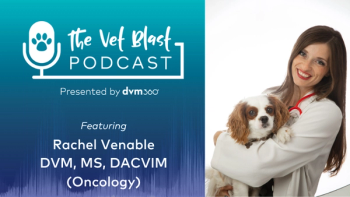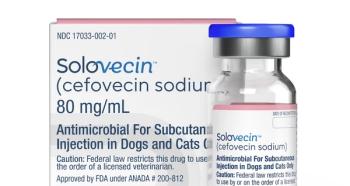A final class is agent-based models (ABMs), also known as individual-based models. ABMs compensate for the weakness of compartment models, which assume disease transmission through the mass action principle, by simulating the operations and interactions of individuals within a population. Multiple simulations are run with each agent following relatively simple rules and with some random variation to generate emergent results based on the interactions and actions of individuals.
These models can incorporate important variables such as age, household composition, environmental changes (change in temperature and humidity in the summer), social interactions and behavioral changes that individuals may make in response to evolving circumstances (such as staying home more often if they observe more deaths in their community, or less often if they do not). Although agents’ actions are based on simple rules, they can capture unexpected aggregate phenomena that result from their interactions with other agents and the environment around them.
ABMs are quite computationally intensive, and they require significant data on environment and behavior, such as the density of different types of workplaces. The most well-known COVID-19 ABM is from London’s Imperial College; this model investigated non-pharmaceutical interventions in COVID-19 and was used to guide early policy for the U.K. and U.S (Figure 4).4
How do I know if I can trust a model’s output?
To understand any model, you must know the assumptions on which it is based, such as how much contact people are assumed to have with affected individuals and how likely they are to die if infected. Knowing the assumptions of a model is like reading the materials and methods of a study — you cannot fully understand or trust the conclusion without it.
The assumptions on which the model is based should be readily available. For models that use data inputs, such as compartment models, you should know what sources provided the values and what those values were. Models should provide a sensitivity analysis, which tests how the model output changes when the underlying data or assumptions are changed. If there are variables for which small changes in the input value lead to large changes in the output of the model, those variables should be examined carefully. Models should also be validated or calibrated to see if the projections match what we have seen actually happen. It is important to note that during an epidemic, accurate data collection can be challenging, and reported data against which models are validated may themselves be imperfect. For example, deaths are often undercounted in the beginning of an epidemic and are revised later to reflect the actual, higher number. Models are dynamic and are updated as knowledge and data change, and as our interventions change the course of the disease.
Which type of model is the best?
None of these approaches to modeling is a perfect representation of the real world. In other words, all models are wrong. The good news is that models do not need to be perfect to be useful.5 All approaches to modeling have strengths and weaknesses, and the “best” model typically depends on the question you are trying to answer and the quality of the available data. For forecast models, a combination of forecasts to create an ensemble or consensus model may be the best approach. This is similar to the “spaghetti” models6 often used to forecast the likely path of hurricanes. Models that have been more accurate in the past often are given greater weight. For example, the Centers for Disease Control and Prevention generates an ensemble model7 that combines nine different types of models (Figure 5), and Reich Lab has an interactive real-time model.8
So, why are there so many different models for the novel coronavirus? Because there are many questions of interest, many ways to answer those questions, and a lot of unknown data about the disease. All types of models can generate misleading results, and it is critical, when considering the quality of the model, to understand the assumptions it makes and the sources and reliability of the input data. Each individual model helps us to understand the whole better. The models are not competitive with each other; rather, they are dynamic snapshots that complement one another. Models provide us a range of possibilities based on our best guess of where we are now to help us prepare for the future or change our behavior to help control our future.
Dr. Dennis owns and practices full-time at Stratham-Newfields Veterinary Hospital in New Hampshire. She is currently the AAVSB representative to the AVMA’s American Board of Veterinary Specialties, chair of the AAHA Veterinary Informatics Committee and Diagnostic Terms Editorial Board, a peer reviewer for JAAHA, chair of the Al Hahn Award for Lifetime Achievement in Veterinary Informatics, and a member of the Outreach and Credentials Committees with ABVP. Dr. Dennis lectures nationally about topics including ethics exhaustion and informatics.
Ms. Piché was recently graduated with a degree in biomedical science from the University of New Hampshire. She is currently working in companion animal practice while exploring her options for pursuing a graduate or professional degree.
Dr. Kreisler, current president of the Association of Veterinary Informatics, is an associate professor at Midwestern University, where she teaches shelter and community medicine, public health, epidemiology, appraisal of the veterinary literature, and practice ownership. Her work outside the classroom includes driving a 33-foot mobile veterinary clinic, providing surgical and medical services to shelter and community animals, investigating disease outbreaks, and researching questions relevant to clinical decision making.
References
- Bradhurst RA, Roche SE, East IJ, et el. A hybrid modeling approach to simulating foot-and-mouth disease outbreaks in Australian livestock. Front Environ Sci. 2015;3. doi: 10.3389/fenvs.2015.00017
- Stevens H. Why outbreaks like coronavirus spread exponentially, and how to “flatten the curve.” The Washington Post. Published March 14, 2020. Accessed June 22, 2020.washingtonpost.com/graphics/2020/world/corona-simulator/
- Institute for Health Metrics and Evaluation. COVID-19 projections. University of Washington. Accessed June 20, 2020.https://covid19.healthdata.org/united-states-of-america
- Ferguson NM, Laydon D, Nedjati-Gilani G, et al. Impact of non-pharmaceutical interventions (NPIs) to reduce COVID-19 mortality and healthcare demand. Imperial College London. Published March 16, 2020. Accessed June 22, 2020.https://doi.org/10.25561/77482
- Champkin J. George Box, (1919-2013): a wit, a kind man and a statistician. Royal Statistical Society. Published April 4, 2018. Accessed June 22, 2020.statslife.org.uk/history-of-stats-science/448-george-box-1919-2013-a-wit-a-kind-man-and-a-statistician
- Bui Q, Katz J, Parlapiano A, et al. What 5 coronavirus models say the next month will look like. The New York Times. Published April 22, 2020. Accessed June 22, 2020. nytimes.com/interactive/2020/04/22/upshot/coronavirus-models.html?auth=login-email&login=email.
- Forecasts of total deaths. Centers for Disease Control and Prevention. Updated June 18, 2020. Accessed June 22, 2020. https://www.cdc.gov/coronavirus/2019-ncov/covid-data/forecasting-us.html
- Reich Lab COVID-19 forecast hub. Reich Lab. Updated June 23, 2020. Accessed June 23, 2020.https://reichlab.io/covid19-forecast-hub/







